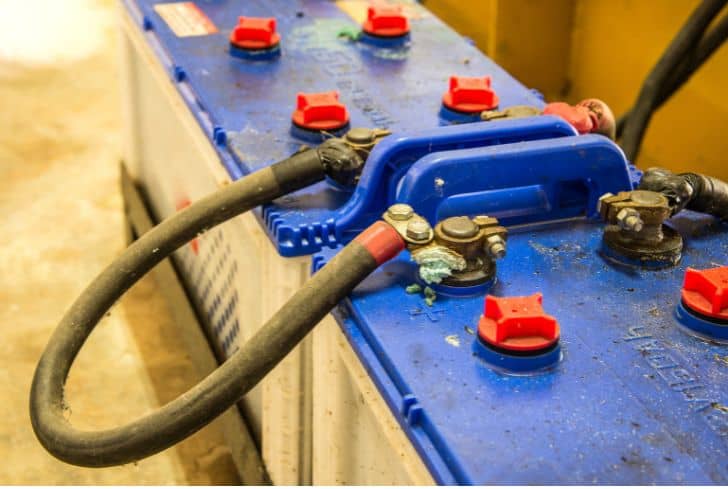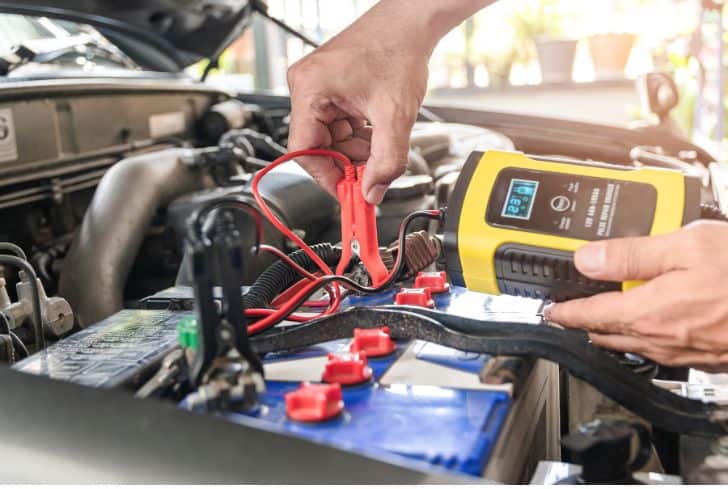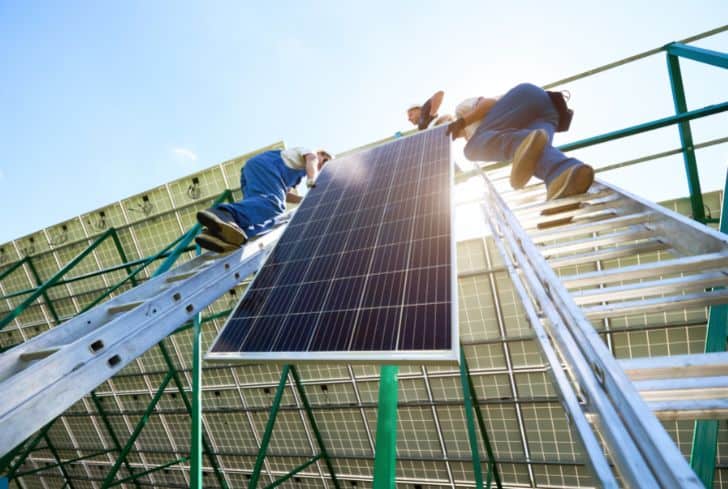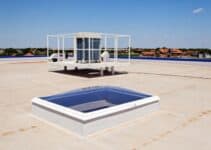With the campaign to switch to renewable energy sources gaining momentum, most households are now transitioning to solar panels as their primary energy source.
Solar panels harness the power of the sun, converting it into electrical energy, which is then sent to the solar battery. There, this power is stored and distributed to respective outlets via the inverter, depending on the demand.
However, the inevitable reality is that not all moments of the year provide ample peak sun hours. This prompts a pressing question: Can a solar battery be charged using traditional electricity sources?
Can You Charge a Solar Battery With Electricity?
Yes, you can charge a solar battery with electricity from your local power grid if your solar panels aren’t providing an adequate amount of electrical charge. But it’s not an efficient way to charge the batteries and should therefore only be considered in times of emergencies.
So yes, the next time it’s cloudy all day, and you want to boost your solar battery using electricity, then know it’s possible.
But then, before you get excited over the feasibility of the idea, there are a few things to bear in mind.
Firstly, you should consider that your solar batteries would take some time to charge, so you should be careful of what time you decide to charge them from your local grid.
Secondly, it would help if you considered that since you are charging from the local grid and aren’t using it to run any other equipment, charging another battery will cost more.
Plus, your solar battery is designed to work with DC, not the AC power you get from your grid. As such, you must convert the AC to DC with an inverter when charging your batteries. Unfortunately, this process isn’t efficient and will consume a lot of power.
Is It Good to Charge the Solar Battery With Electricity?
Although it’s technically feasible to charge your solar battery with electricity, the primary fact is that solar batteries are designed to work with solar energy. Hence, having to charge them with electricity defeats the purpose of installing them in the first place.
Plus, charging your batteries with electricity upsurges the amount of electricity you consume, increasing your electricity bill even if your area has low electricity charges.
Also, the batteries deplete quickly while charging with electricity, which could result in energy loss, making it an ineffective method. Of course, that’s without ignoring the fact that electricity produces a high current, reducing its life span or causing permanent damage to your battery.
If you don’t have enough solar supply, charge your batteries with the bit of solar energy available and then top up the charge with power from the grid. And be sure to stay away from the battery when charging, as it tends to explode under certain conditions, but that’s rare.
When Should You Charge the Solar Battery with a Power Grid?

Grid power is much more expensive than solar power, so you must keep electricity costs as low as possible. So, if you must charge your solar batteries with a power grid, it’s best to charge them when the tariff charge is significantly lower to save costs.
In some areas, the tariff costs are lower at night because electricity consumption is lower. Also, the PV might not be able to supply enough energy during the day; on such days, you might not be able to connect the solar batteries to the grid and charge fully.
Do You Need an Inverter to Charge a Battery?
When charging a solar battery using electricity, an “inverter” remains a must-have component in the setup. This component converts the AC power from the power grid to DC, which is the compatible form of electricity recognized by solar batteries.
But did you notice that the “inverter” was in quotation marks? Well, that’s because although referred to as such by most people, that’s not their actual name. Inverters convert power from DC to AC.
An inverter sits between your solar battery and power appliances and ensures that the “raw” DC power exiting the battery gets converted to AC for use by different appliances in your home.
In the case of electricity and solar batteries, the need is to convert power from AC to DC and not vice-versa. In that case, the device you need is a rectifier. It does the opposite of what an inverter does.
So yes, you need an inverting device called a rectifier to convert the power from AC to DC when charging your solar battery using electricity.
Can You Charge Solar Batteries With a Generator?
If your generator is connected to your battery correctly, charging is possible and automatic. But then, you must also know your battery’s specifications to regulate the charging.
A generator can help when you have no electricity or another energy source. But did you know that you can use it to charge your solar batteries?
Well, that’s right!
But again, like with electricity coming from the power grid, energy from a generator is in AC. As such, you still need an excellent inverting device to convert it to the DC power required to charge the batteries. That’s to say, you cannot connect the battery directly.
Plus, the generator should also be twice the size of the inverter.
Ideally, a generator should take about 5 to 8 hours to charge an empty battery fully. But often, the time required for a full charge depends on several variables, such as the voltage reaching the battery, the battery’s size, and the battery’s condition.
Hence, the battery will take a little longer to charge fully if a charge controller is used. This is because it only allows about twenty percent of the voltage to reach the battery while charging.
Can you Charge Batteries From the Charger and Solar at Once?
Most batteries come with a dual charging feature and are always highly efficient to charge with both grid power and solar energy. The energy supply is most important when trying to charge your batteries. You only have to ensure that the right amount of voltage passes through the cable so that your batteries can charge safely.
Solar batteries discharge at a slower rate, storing energy for future use when you charge them. However, the battery chargers regulate the flow of electrons from a higher to a lower voltage. When the voltage exceeds the EMF, the electrons flow to and from the anode to the cathode. This means that you have to use the appropriate battery chargers.
As a result, their discharge rate can be optimized and used at the lower voltage level. If you get confused about which equipment to use, contact the battery manufacturers to get accurate information on how to use it.
Can You Charge a Solar Battery With A Car Battery Charger?

Strange as this might sound, yes, you can charge a solar battery with a car battery charger. But before you do it, ensure the charger suits your solar battery. Check the specifications of your battery to see what type of chargers are compatible with it. You can also read the specs of the car charger to decipher what type of batteries it supports.
Luckily, most solar companies sell all solar equipment together, so all their equipment is compatible. However, the battery’s charging process boils down to the battery chemistry. Lead-acid batteries align with the car chargers and produce enough energy to charge the batteries. They are also easily compatible.
Automatic car chargers will help charge the battery and cut off the power supply when the battery is full.
How Do you Know a Solar Battery is Fully Charged?
There are several ways to check the charge level of your solar battery. You can use charge controllers or inverters if you have them as part of your solar power system. But if you don’t have them, you could use meters such as voltmeters or multimeters that aren’t fixed in the system.
Solar batteries take about five to seven hours to reach full charge under suitable weather conditions. It can be longer under poor conditions.
Use a charge controller to check the charge of the battery. A modern charge controller has a display screen that will indicate the voltage going into the battery and when it has reached its float level.
If your charge controller doesn’t have a screen, it should have a light that displays when the battery has reached the float phase and is complete.
Plus, inverting devices also have a display screen showing the battery’s charge level. Some have a noise or light feature that signals when the battery is charged or running low, so it depends on the type of device you have.
Voltmeters come in analog or with a digital display. Either way, they always provide accurate results. To use a voltmeter to determine the battery’s charge, you should connect the voltmeter to the black and red ports on a battery that is rested. A reading of about 13 volts means the battery is fully charged.
Multi-meters also work the same way voltmeters do. It also comes in both digital and analog. When using an analog multimeter, you should check the voltage indicator. At the same time, a digital one will require you to select the voltage setting. However, a digital multimeter is more accurate than an analog.
Where Does Solar Power Go When Batteries Are Full?
When solar batteries are full, the excess solar power generated by the solar panels is typically sent back to the grid or wasted. In grid-connected solar systems, this surplus energy flows into the local power grid, allowing other users to benefit from it.
This process is known as net metering or grid feed-in. In some cases, solar power systems with battery storage may have a mechanism to divert excess energy to other uses, such as heating water or charging electric vehicles, to maximize its utilization.
The goal is to ensure that the generated solar power is put to good use even when the batteries are already at full capacity.
Conclusion
Apart from solar energy, it’s essential to have an alternative energy source because solar power can be unstable. Installing a battery can help tackle the uncertainties of using solar power and provide adequate backup.






